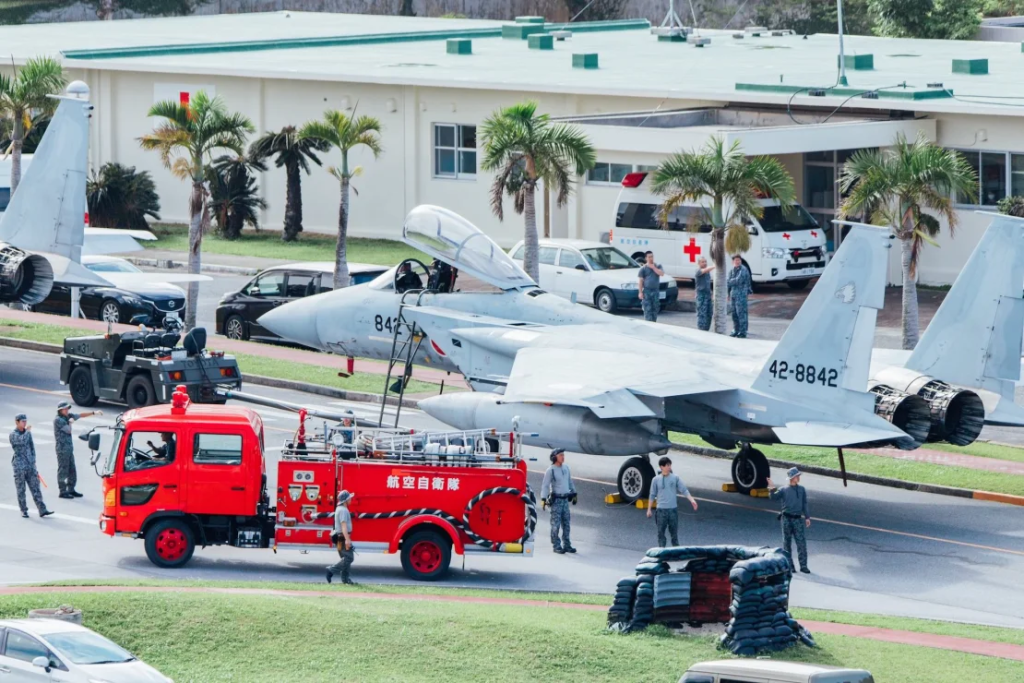Fighter pilots practice scrambling their jets so they can take off in minutes should a military threat arise. But what do they do when Mother Nature is the enemy?
At one Japanese air base, they take to the streets.
After a 7.4-magnitude earthquake off Taiwan last week prompted a tsunami alert for Okinawa, the Japan Air Self-Defense Force’s Naha Air Base, attached to the low-lying Naha Airport on the southwestern coast of the island, moved a dozen F-15J fighter jets to a two-lane road on higher ground.
Images of the base posted on social media showed what looked like a rush hour of air power, with the dozen jets taking up more than an eighth of a mile of road.
A base spokesperson told CNN putting warplanes on a roadway rather than a runway is something that’s practiced so it can be done quickly.
“It took 15 to 20 minutes to move 12 fighter jets thanks to normal-time evacuation drills,” the spokesperson said. The F-15J, a variant of the US-designed F-15, is the “mainstay” of Japan’s air force, according to the country’s Defense Ministry.
The twin-engine jets, which cost about $30 million apiece, weigh about 25 tons each, with a wingspan of 43 feet (13.1 meters) and a length of almost 64 feet (19.4 meters). They can fly at 2.5 times the speed of sound, but aircraft tugs did the work during the tsunami alert.

When no damaging tsunami materialized, operations quickly returned to normal.
“They went back as all tsunami warnings were lifted,” the base spokesperson said.
The Japanese military wasn’t the only force affected by last week’s quake. Taiwan’s Defense Ministry said eight of its warplanes – six F-16s and two F-5s – suffered scratches during the temblor.
“After inspection, the scratches do not impact the integrity of the aircraft, and can be repaired immediately. Combat readiness is not impacted,” the ministry said.
Repairs had been completed by Tuesday, the ministry added. The quake, the strongest to hit Taiwan in 25 years, killed at least 13 people and injured more than 1,100 others.


